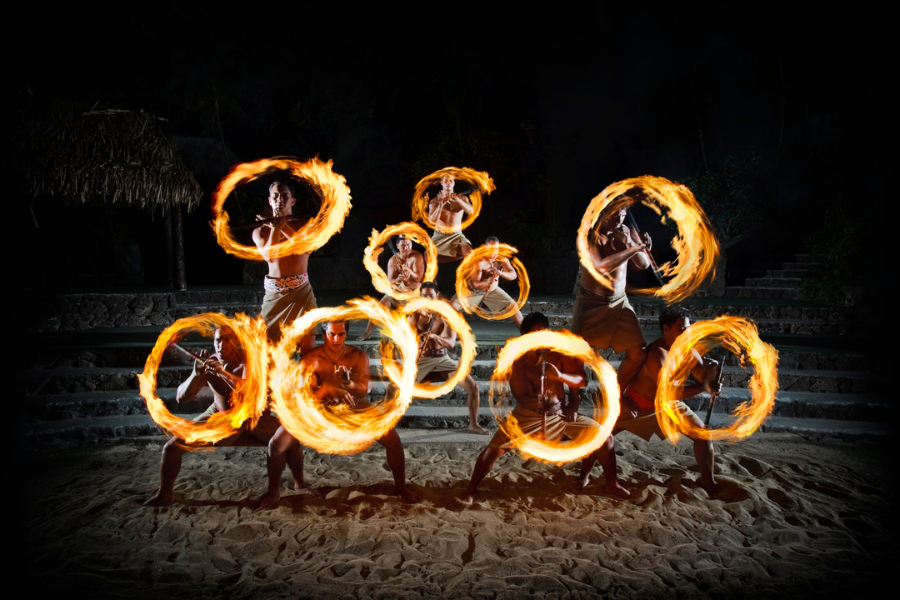A Little Bit Country, A Little Bit Rock ‘n Roll

A young girl in a wide-brimmed cowboy hat and fire engine-red boots stands awestruck on the Ryman Auditorium stage in Nashville, Tennessee, gazing out into the empty church pews that accommodate the audience on show nights. Perhaps, like so many in Music City, she dreams of making it big as a country music superstar someday.
Her friend waves a camera, and the girl grabs the microphone and throws her head back, holding an imaginary note that reverberates all the way to the colorful stained glass windows in the back row.
It’s all part of the fun of touring this 2,362-seat live-music venue that’s a National Historic Landmark.
Nashville is the epicenter of the country music universe, and many fans kick off their musical journey through the city at the Ryman.
For them, the Ryman stage is hallowed ground. It was here that Hank Williams was called back for a record six encores of “Lovesick Blues” and Patsy Cline mesmerized audiences with her chart-topping hit, “Crazy.”
Known as the Mother Church of Country Music because of its origins as a house of worship, the Ryman was home to the Grand Ole Opry, the world’s longest running live radio program, from 1943 to 1974, when it moved to its current location near the Gaylord Opryland Resort & Convention Center.
The Ryman is famous for its country music heritage, but it has always hosted artists that play all kinds of music. A new exhibit, “Plugged In: Ryman’s Rock Legacy” opens in March. www.ryman.com
The Country Music Hall of Fame and Museum
Rockabilly queen Wanda Jackson belts out “Hard Headed Woman” from a screen at the Country Music Hall of Fame and Museum, the fringe on her form-fitting dress flying as she deftly plays guitar. The black-and-white vintage footage is faded and blurred, but Jackson’s sexy, Elvis-like growl comes through loud and clear.
“Sing Me Back Home: A Journey Through Country Music” is a multi-media exhibit that chronicles the evolution of the genre through the decades, from its humble beginnings in the rural South to its polished modern sound.
Bristol, Tennessee, is considered the birthplace of country music because of the now famous 1927 Bristol sessions that recorded trailblazers like Jimmie Rodgers and the Carter Family, bringing “hillbilly music,” as it was then called, to a wider audience. On view are Sara Carter’s Zimmerman autoharp and Rodger’s guitar.
Another standout exhibit is “Outlaws and Armadillos: Country’s Roaring ‘70s.” It tells the story of country music rebels on the run. Willie Nelson, Waylon Jennings and other musicians ran away from the Nashville Sound, a formulaic blend of country and pop pushed by record companies of the era.
Many outlaws made their mark at Armadillo World Headquarters, a gritty country-rock venue in Austin, Texas, that gained a reputation as the antidote to Nashville.
A treasure trove of memorabilia includes a collection of promotional club posters designed by Jim Franklin featuring his trademark psychedelic armadillo and Nelson’s original handwritten lyrics to “I Still Can’t Believe You’re Gone.” www.countrymusichalloffame.org
Musicians Hall of Fame and Museum
You could call them “unsung heroes” in a tongue-in-cheek way. The musicians honored at the Musicians Hall of Fame and Museum represent a variety of musical styles: rock, Motown, Muscle Shoals, and, of course, country, but what they have in common is dwelling in the shadows while the stars they play for bask in the limelight.
Always playing second fiddle. Or the guitar. Or the drums.
For example, from the 1950s through the ‘70s, a small group of venerable musicians known as the A Team played on approximately 90 percent of the recordings made in Nashville, helping to craft a sound that skyrocketed many artists to the top of the charts, but nobody was stopping them on the street for autographs. The museum gives these talented individuals and many others their due.
“These musicians may be relatively unknown to the general public, but to the singers they played for, they are superstars,” museum founder Joe Chambers said.
Fans learn who played on their favorite songs and, in some cases, see the actual instruments used on the recordings.
Garth Brooks is a household name, but the G-Men? Not so much. This stellar group of musicians has played on all of Brooks’ studio albums (except his Chris Gaines album) and was inducted into the Hall of Fame in 2016.
It’s hard to imagine “The Thunder Rolls” without Chris Leuzinger’s bluesy slide guitar. This instrument and many others played by the G-Men are prominently displayed. www.musicianshalloffame.com
For more information about Nashville, visit www.visitmusiccity.com
East Nashville
After you’ve done the touristy stuff, get off the beaten path and head to East Nashville, a quirky neighborhood with a hipster vibe.
Nothing says “East Nashville” like Vinyl Tap, a trendy record store and bar. Grab a craft beer and kick it with fellow music lovers eager to hear all about that cool record you just bought. www.vinyltapnashville.com
Hungry? I Dream of Weenie serves hotdogs with whimsical names out of an old Volkswagen “hippie van.” Try the Rebel Yelp, piled high with chow-chow (Southern relish).
For a pair of killer cowgirl boots, stop by Goodbuy Girls, a boutique that sells vintage and new Western wear. www.goodbuygirlsnashville.com
Tracey Teo is a writer living in Evansville, Indiana.





